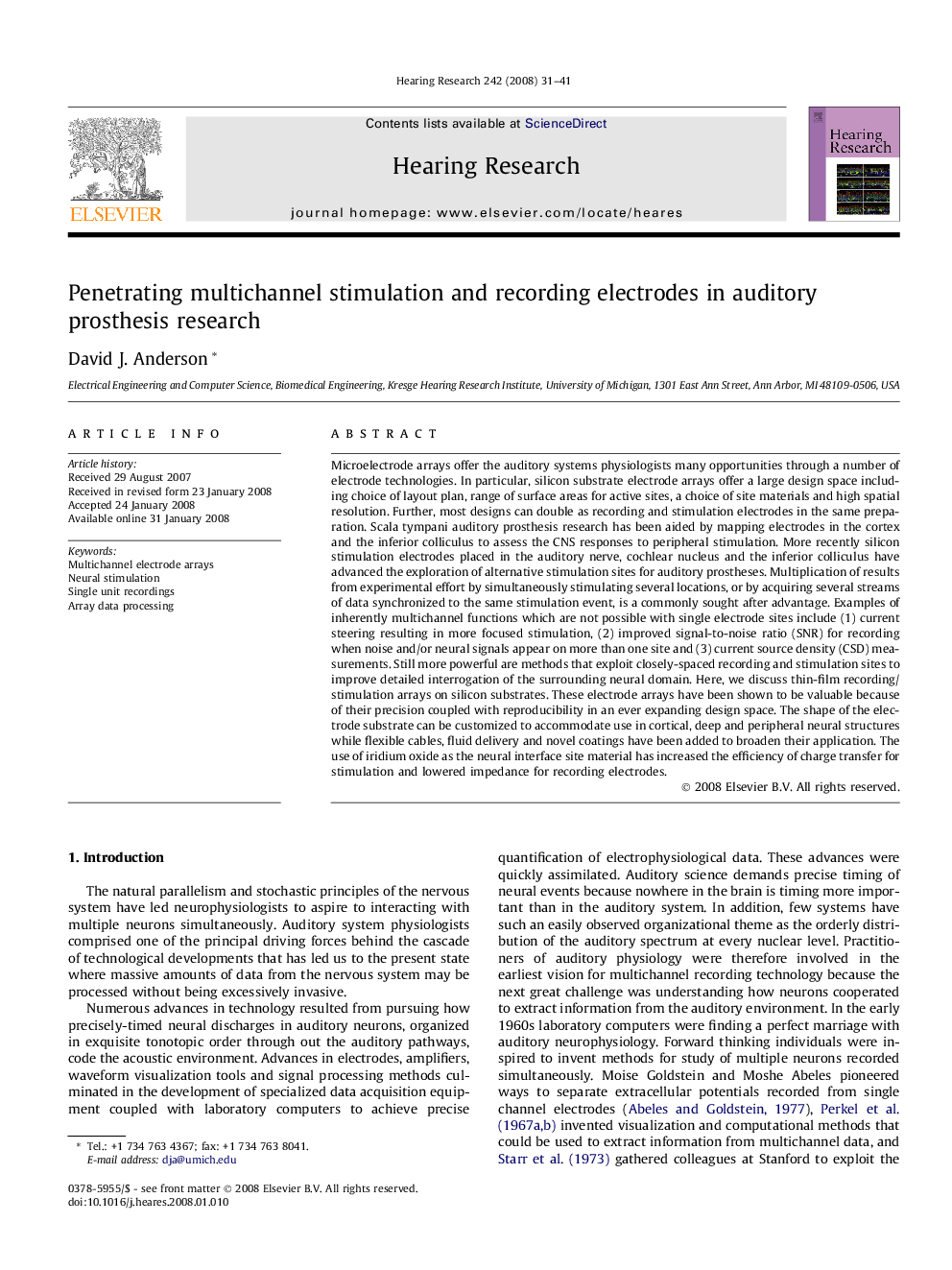| Article ID | Journal | Published Year | Pages | File Type |
|---|---|---|---|---|
| 4356052 | Hearing Research | 2008 | 11 Pages |
Microelectrode arrays offer the auditory systems physiologists many opportunities through a number of electrode technologies. In particular, silicon substrate electrode arrays offer a large design space including choice of layout plan, range of surface areas for active sites, a choice of site materials and high spatial resolution. Further, most designs can double as recording and stimulation electrodes in the same preparation. Scala tympani auditory prosthesis research has been aided by mapping electrodes in the cortex and the inferior colliculus to assess the CNS responses to peripheral stimulation. More recently silicon stimulation electrodes placed in the auditory nerve, cochlear nucleus and the inferior colliculus have advanced the exploration of alternative stimulation sites for auditory prostheses. Multiplication of results from experimental effort by simultaneously stimulating several locations, or by acquiring several streams of data synchronized to the same stimulation event, is a commonly sought after advantage. Examples of inherently multichannel functions which are not possible with single electrode sites include (1) current steering resulting in more focused stimulation, (2) improved signal-to-noise ratio (SNR) for recording when noise and/or neural signals appear on more than one site and (3) current source density (CSD) measurements. Still more powerful are methods that exploit closely-spaced recording and stimulation sites to improve detailed interrogation of the surrounding neural domain. Here, we discuss thin-film recording/stimulation arrays on silicon substrates. These electrode arrays have been shown to be valuable because of their precision coupled with reproducibility in an ever expanding design space. The shape of the electrode substrate can be customized to accommodate use in cortical, deep and peripheral neural structures while flexible cables, fluid delivery and novel coatings have been added to broaden their application. The use of iridium oxide as the neural interface site material has increased the efficiency of charge transfer for stimulation and lowered impedance for recording electrodes.
